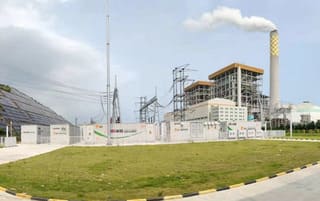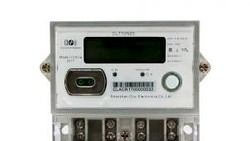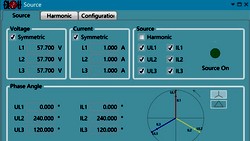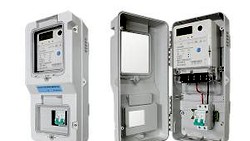Electricity is consumed at the same time as it is generated. An imbalance between supply and demand will damage the stability and quality (voltage and frequency) of the power supply, even when it does not lead to a blackout.

Power generation is usually located far from where it is consumed. Generators and consumers are connected through power grids. So, depending on the demand, the power may be concentrated on a specific transmission line and this may cause congestion.
Since power lines are always needed, if a failure on a line occurs, the supply of electricity will be interrupted. The following article summarizes some benefits of electrical energy storage.
High Generation Cost during Peak-demand
Power demand varies over the day, and the price of electricity changes accordingly. The price for electricity at peak-demand periods is higher and at off-peak periods lower. This is caused by differences in the cost of generation in each period.
During peak periods when electricity consumption is higher than average, power suppliers must support the base-load power plants, such as coal-red and nuclear with less cost-effective but more flexible forms of generation, like oil and gas-red generators.
During the off-peak period, when less electricity is consumed, costly types of generation can be stopped.
In this case, energy storage systems can benefit financially. For utilities, there is a huge potential to reduce the power generation cost by storage of electricity generated by low-cost power plants during the night and injecting into the power grid during peak times.
With high power generation by PV and wind, cost-free surplus energy is sometimes available. This surplus can be stored in EES and used to reduce generation costs.
Beside the advantage for the utilities, end-users with high consumption during peak times can charge their batteries on lower cost during the night and use it over the day.
Continuous- and Flexible Supply
If the proper amount of electricity cannot be provided at the time when consumers need it, the power quality will decrease and can lead to a service interruption. To meet the changing power consumption, appropriate amounts of electricity should be generated continuously, relying on an accurate forecast of the variations in demand.
For forecast, our energy meters with load-profile together with an AMI-system for data acquisition can deliver the most accurate results.
Power generators have two essential functions in addition to the basic generating function. Generating plants are required to be equipped with a “kilowatt function”, to generate sufficient power (kW) when necessary. In addition, they must have a frequency control function, using the extra power from the “kilowatt function” if the frequency drops below the nominal value.
Renewable energy plants (PV/wind) do not have both a kW function and a frequency control function unless they are suitably modified. Such a modification can be for example a phase shift inverter. In Germany such a modification, called “system services”, must be implemented in large wind power generators.
EES is able to compensate for such difficulties with a kW function and a frequency control function. Pumped hydro has been widely used to provide a large amount of power when generated electricity is in short supply. Stationary batteries are utilized to support renewable energy output with their quick response capability.
Distance between generation and consumption
The consumer's locations are often far from power generation. This leads to higher chances of an interruption in the power supply. Network failures due to natural disasters (e.g. lightning, typhoon, heavy snow fall) and other causes like short-circuit, overload, operational accidents or vandalism stop electricity supply and potentially influence wide areas.
EES helps users when power network failures occur by continuing to supply power to consumers. One of the representative industries utilizing EES is semiconductor and LCD manufacturing, where a voltage sag lasting for even a few milliseconds impacts the quality of the products.
A UPS system, built on EES and located at a customer site, keeps supplying electricity to critical loads even when voltage sag occurs due to, for example, a direct lightning strike on distribution lines. The CLOU energy meter manufacturing site is using an energy storage container with a capacity of 2.5 MWh as UPS. This capacity is sufficient to finish all critical processes and to shoot down in a controlled way, if necessary.
Congestion in Power Grids
The power flow in transmission lines is determined by the supply and demand of electricity. In the process of balancing supply and demand, congestion can occur. Utility companies try to predict future congestion and avoid overloads, for example by dispatching generator outputs or building new transmission routes.
When EES systems are located at substations at the ends of heavily-loaded lines, they can mitigate congestion, by storing electricity while transmission lines maintain enough capacity and by using it when lines are not available due to congestion.
This approach also helps utilities to postpone or suspend the construction of new transmission lines.
Micro Grids and Off-Grid
Remote regions without connection to a transmission line can with help of ESS now become independent of fuel and diesel generators. Main examples are remote villages, mining sites, recreation resorts or locations for temporary use, like bis sports events.
In addition, we have now many EV-cars on the road. Having off-grid car charging stations together with fast-food restaurants is a trending business model.
Conclusion
The objectives of our customers for the usage of electrical energy storage are various. We have shared here only some aspects. We'd like to read your ideas in the comments section.
If you are planning an electrical energy storage system, talk to us. We have a wide experience for implementations in different parts of the world.
Thank you for reading and stay safe.
May the power be with you.
Editor's note: This article was originally published in February 2022 and has been updated for comprehensiveness.





Congratulations for so good info about energy storage. Thanks
Thank you for your kind feedback, Mariano.